If you are completely done with a dictionary project, and you want to get rid of it, you can delete it.
However, be sure you want to delete the project. You cannot recover the project files after they are deleted. (If you are not sure, you may want to export the project first. That way, you can get it back later.)
You can delete the files in two ways:
Click ![]() Tools >
Tools > ![]() Delete dictionaries. You will see this dialog:
Delete dictionaries. You will see this dialog:
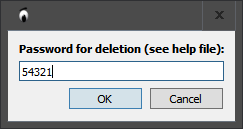
This dialog helps prevent people from accidentally deleting a project. Type "54321" as the password for deletion, then click  .
.
You will see this dialog:
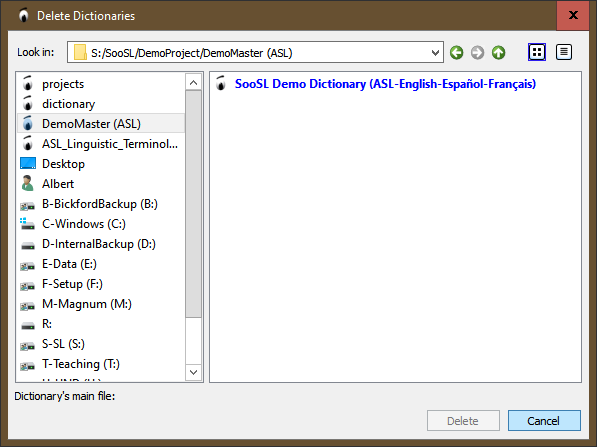
If a project is in blue text, that means it is currently open in SooSL. This is just a warning; you can still go ahead and delete it if you want.
You can use the list on the left to look for a project in a different location.
If you want more details about the projects that are listed, switch to detail view.
Click a dictionary you want to delete. It will turn red. You can choose more than one dictionary.
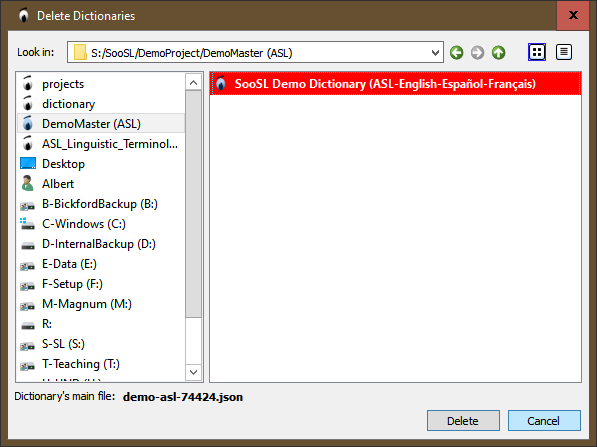
If you change your mind, click it again. It will turn black-and-white again.
When you have made your choice, click  . SooSL will ask you to confirm the deletion:
. SooSL will ask you to confirm the deletion:
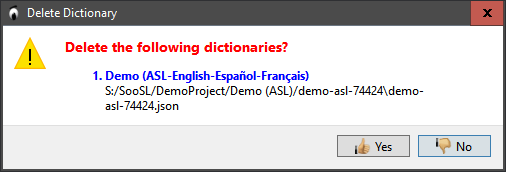
 . You cannot recover the files after they are deleted.
. You cannot recover the files after they are deleted. .
.If successful, you will see this dialog:
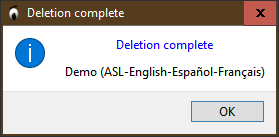
If you want to see more information about the project files that you might delete, click ![]() Detail View in the top-right corner of the dialog. You will see more columns.
Detail View in the top-right corner of the dialog. You will see more columns.
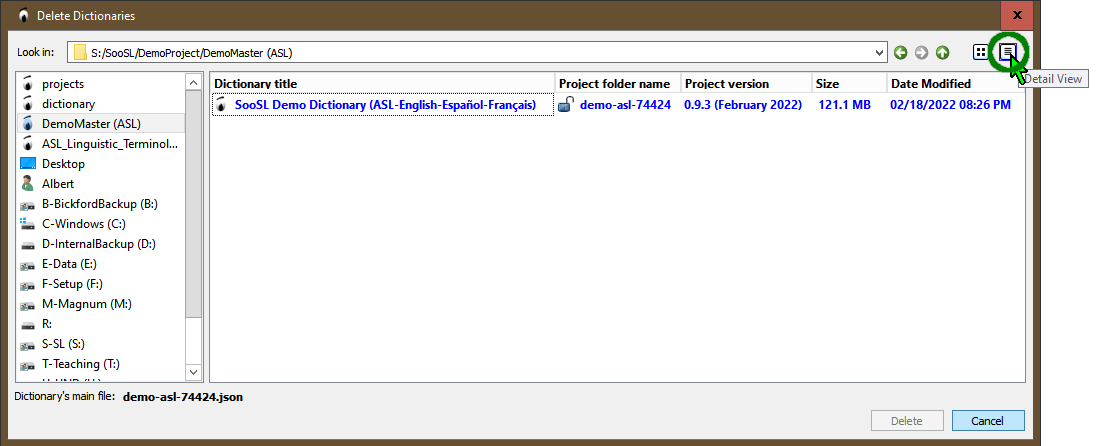
These columns show you more information:
If you know where the files for the dictionary project are stored, you can delete those files outside SooSL.
First, learn about how dictionary projects are stored on your computer.
To find out where the currently-open dictionary is stored, you can look at the bottom of the SooSL window. The location of the dictionary project—its project folder—is in the status bar. You can also find the location in Tools ![]() > About Dictionary.
> About Dictionary.
Also, it's best to close SooSL first before you delete any dictionary project files. At least, make sure the project you are deleting is not open in SooSL.
Then you can use the file manager in your operating system to delete the project folder and the project files (e.g. File Explorer on Windows, the Finder on Mac, or Thunar, Dolphin, Nemo etc. on Linux). You can also delete them from a command line; choose a recursive delete.
Created with the Personal Edition of HelpNDoc: Easily create HTML Help documents